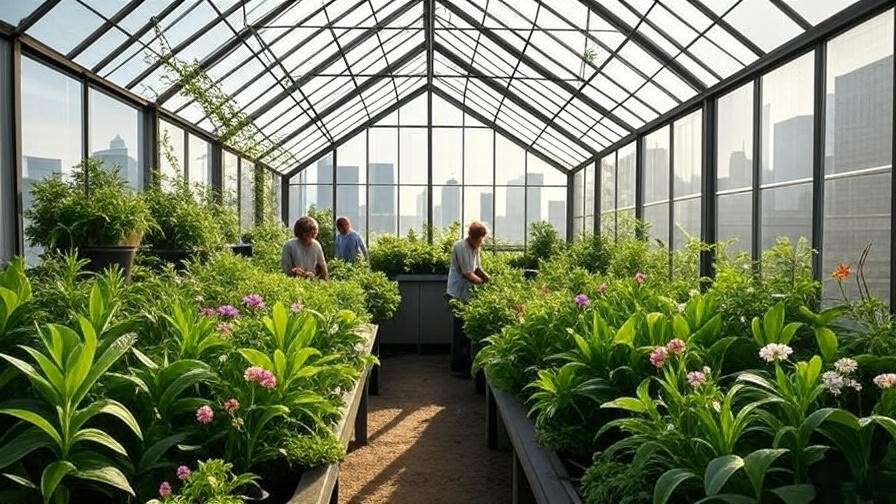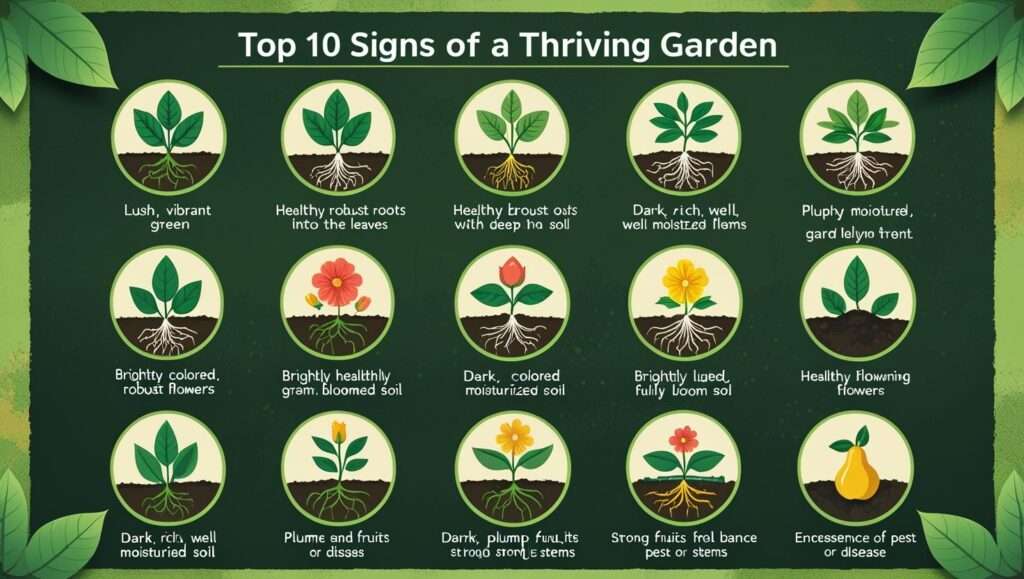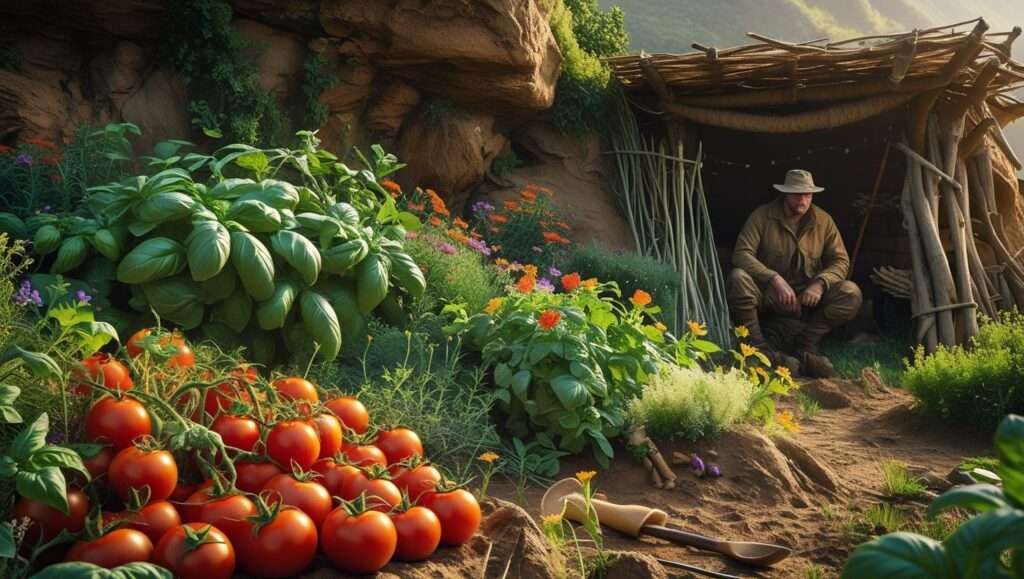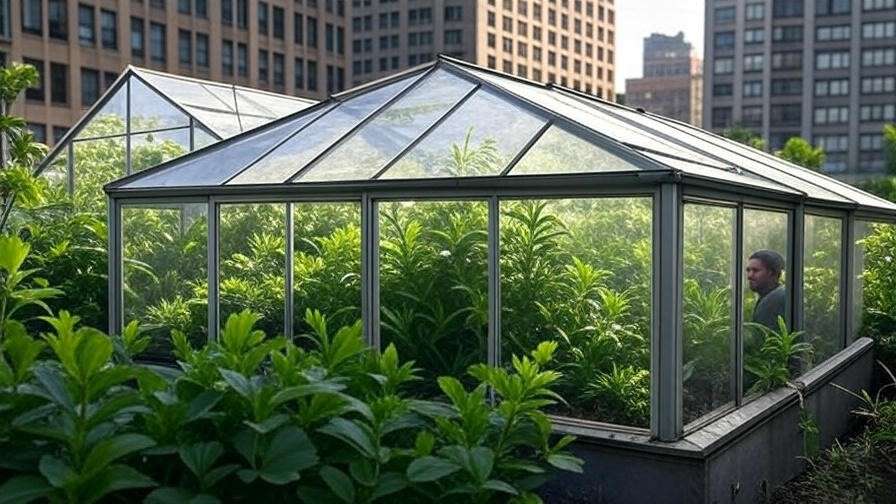Picture this: a vibrant, green oasis thriving atop your urban apartment building, bursting with fresh herbs, leafy greens, and juicy tomatoes—all grown right above the city’s hustle and bustle. This isn’t a dream—it’s the reality of a rooftop greenhouse description brought to life. As urban populations soar and green spaces dwindle, rooftop greenhouses are revolutionizing how we grow food, offering sustainable solutions for city dwellers craving fresh, organic produce. Yet, many aspiring urban farmers feel overwhelmed by the idea, unsure where to start or how to make it work. This comprehensive guide demystifies the rooftop greenhouse, delivering expert insights, actionable steps, and real-world examples to help you create a thriving urban garden. Backed by agricultural research and success stories from leading urban farms, this article will empower you to transform your rooftop into a productive, eco-friendly haven.
What is a Rooftop Greenhouse?
Definition and Core Concept
A rooftop greenhouse is a controlled-environment structure built on top of urban buildings to cultivate plants year-round. Unlike traditional greenhouses set in rural fields, these urban marvels are designed to maximize limited space while overcoming city-specific challenges like pollution, poor soil, and extreme weather. According to the Urban Agriculture Network, a rooftop greenhouse is “an enclosed system that optimizes light, temperature, and humidity to grow crops efficiently in urban settings.” Think of it as a high-tech garden bubble, shielding plants from the urban chaos below while harnessing sunlight from above.
These structures are tailored to urban environments, often integrating with building systems like rainwater collection or solar panels. For example, Brooklyn Grange, a pioneer in urban farming, uses rooftop greenhouses to produce thousands of pounds of organic produce annually, proving their viability in dense cities.

Key Features of a Rooftop Greenhouse
Rooftop greenhouses stand out for their unique design and functionality. Key features include:
- Enclosed Structure: Transparent or translucent walls and roofs (often made of glass or polycarbonate) allow sunlight to penetrate while protecting plants from wind, rain, and pollutants.
- Climate Control: Systems like heaters, fans, and vents regulate temperature and humidity, ensuring optimal growing conditions.
- Urban Integration: Many incorporate sustainable features like rainwater harvesting or green roofs, blending seamlessly with city infrastructure.
- Space Efficiency: Designed to fit compact rooftops, they maximize vertical and horizontal space through raised beds or hydroponics.
These features make rooftop greenhouses a game-changer for urban agriculture, enabling year-round farming in spaces once considered unusable.
Benefits of a Rooftop Greenhouse
Sustainable Urban Food Production
Rooftop greenhouses are a cornerstone of sustainable urban farming. By growing food locally, they slash the carbon footprint tied to transporting produce across continents. The USDA’s Sustainable Agriculture Research program notes that urban farming can reduce food miles by up to 90%, cutting emissions significantly. Plus, you get fresh, organic produce free from harmful pesticides, ensuring healthier meals for your family or community.

Space Optimization
In crowded cities, space is a premium commodity. Rooftop greenhouses turn underutilized rooftops into productive farmland. Gotham Greens, a leader in urban agriculture, operates a 75,000-square-foot rooftop greenhouse in New York City, producing millions of pounds of greens annually. This space-saving approach allows urbanites to grow substantial yields without needing a traditional garden plot.
Year-Round Growing
Unlike open-air gardens limited by seasonal changes, rooftop greenhouses offer climate control for year-round production. The Food and Agriculture Organization (FAO) reports that greenhouses can boost crop yields by 20-50% compared to outdoor plots, thanks to protection from frost, heatwaves, and pests. Whether it’s winter in Chicago or summer in Miami, your greenhouse keeps crops thriving.
Community and Environmental Impact
Beyond food production, rooftop greenhouses foster community connections and environmental benefits. They provide local jobs, support food security, and create green spaces that combat the urban heat island effect. Studies from the EPA show that green roofs, often paired with greenhouses, can reduce building energy costs by 10-15% by improving insulation. Plus, they inspire neighbors to embrace sustainable living, creating a ripple effect of positive change.
Types of Rooftop Greenhouses

Passive Solar Greenhouses
Passive solar greenhouses rely on sunlight for heating, making them cost-effective for small-scale urban farmers. These simple structures, like hoop houses, use minimal energy, harnessing natural light and heat retention to maintain growing conditions. Community gardens, such as those in Seattle’s urban farming network, often use passive solar designs for their affordability and ease of setup.
Climate-Controlled Greenhouses
For larger or commercial operations, climate-controlled greenhouses offer advanced systems like automated irrigation, heating, and cooling. Lufa Farms in Montreal, for instance, uses high-tech hydroponic greenhouses to supply fresh produce to thousands of households weekly. These setups ensure precise control over growing conditions, ideal for high-value crops like microgreens or herbs.
DIY vs. Prefabricated Options
Urban farmers can choose between DIY greenhouses, built from scratch with materials like PVC and polyethylene film, or prefabricated kits designed for quick assembly. DIY options cost $500-$2,000 but require more labor and expertise. Prefab kits, priced at $3,000-$10,000, offer convenience and durability but come with a higher upfront cost. Your choice depends on budget, skill level, and project scale.
Designing Your Rooftop Greenhouse

Assessing Rooftop Suitability
Before building, ensure your rooftop can support a greenhouse. Hire a structural engineer to assess load-bearing capacity, as greenhouses add weight from soil, water, and equipment. The American Society of Agricultural and Biological Engineers (ASABE) recommends rooftops support 15-30 pounds per square foot for safe greenhouse installation. Costs for assessments typically range from $1,000-$2,500. Also, evaluate sunlight exposure (at least 6 hours daily), wind patterns, and access for maintenance.
Choosing Materials
Material selection is critical for durability and efficiency. Common options include:
- Polycarbonate: Lightweight, shatter-resistant, and excellent for insulation; used in projects like Eagle Street Rooftop Farm.
- Glass: Offers clarity and longevity but is heavier and pricier.
- Polyethylene Film: Affordable and flexible but less durable, requiring replacement every 2-5 years.
For frames, aluminum or galvanized steel resists corrosion in urban environments, while treated wood offers a budget-friendly but less durable option.
Ventilation and Climate Control
Proper ventilation prevents overheating and maintains humidity. Install vents, exhaust fans, or shade cloths to regulate conditions. The University of California Extension recommends maintaining greenhouse temperatures between 65-80°F for most crops. Automated systems, like thermostats or smart sensors, can streamline this process, ensuring consistent growth.
Irrigation and Nutrient Systems
Efficient watering is key. Drip irrigation delivers water directly to plant roots, reducing waste, while hydroponics or aquaponics eliminate soil entirely, boosting yields in small spaces. Rainwater harvesting systems can cut water costs by 30-50%, per EPA data, making them a sustainable choice for urban greenhouses.
Step-by-Step Guide to Building a Rooftop Greenhouse

Step 1: Planning and Permits
Start by researching local zoning laws and building codes. In cities like New York, the Department of Buildings requires permits for rooftop structures over a certain size. Consult an urban farming expert, like those at the Urban Farming Institute, to navigate regulations smoothly. Create a detailed plan, including greenhouse size, crop types, and budget.
Step 2: Foundation and Framing
Build a lightweight foundation to avoid overloading your rooftop. Use raised beds with lightweight soil mixes, such as perlite or vermiculite, to reduce weight while retaining nutrients. Assemble the frame securely, ensuring it can withstand urban winds, which can reach 30-50 mph in high-rise areas.
Step 3: Installing Climate Control Systems
Equip your greenhouse with thermostats, heaters, and misting systems for optimal conditions. Basic setups cost $500-$1,500, while advanced automation can run $3,000-$5,000. Test systems thoroughly to ensure reliability, especially during extreme weather.
Step 4: Crop Selection and Planting
Choose high-yield, fast-growing crops suited for greenhouses, such as lettuce (30-45 day yield), kale, basil, or cherry tomatoes. Cornell University’s Small Farms Program recommends starting with leafy greens for beginners due to their low maintenance and quick turnover. Use companion planting, like pairing basil with tomatoes, to maximize space and deter pests.
Step 5: Maintenance and Monitoring
Regular maintenance is crucial. Check for pests (e.g., aphids, spider mites), monitor soil pH (ideal: 6.0-7.0, per USDA), and ensure equipment functions properly. Integrated pest management, as practiced by Urban Roots Farm, uses natural predators like ladybugs to control pests without chemicals.
Challenges and Solutions

Weight and Structural Concerns
One of the biggest hurdles in building a rooftop greenhouse is ensuring the rooftop can handle the additional weight. Greenhouses, with their soil, water systems, and structural components, can add 15-30 pounds per square foot, according to the American Society of Civil Engineers (ASCE). Overloading a rooftop risks structural damage, which could be costly or dangerous.
Solution: Always consult a licensed structural engineer before construction. They can assess your building’s load-bearing capacity and recommend reinforcements if needed. Opt for lightweight materials like polycarbonate panels and perlite-based soil mixes to minimize weight. For example, Brooklyn Grange uses lightweight growing mediums to keep their rooftop farms safe and sustainable. Additionally, modular designs allow you to distribute weight evenly, reducing stress on any single point.
High Initial Costs
The upfront cost of a rooftop greenhouse can be daunting, especially for individuals or small community groups. DIY setups may cost $500-$2,000, while climate-controlled systems can range from $3,000-$10,000, depending on size and automation.
Solution: Explore funding options like USDA Urban Agriculture and Innovative Production grants, which offer $10,000-$50,000 for urban farming projects. Crowdfunding or community partnerships can also offset costs—Lufa Farms in Montreal, for instance, started with community support before scaling up. Phased construction, where you build a smaller greenhouse and expand over time, is another budget-friendly approach. Prioritize high-ROI crops like microgreens, which can yield profits in as little as 10-14 days, to recoup costs faster.
Limited Space
Rooftops, even large ones, have finite space, making it challenging to maximize crop yields in a compact area.
Solution: Embrace vertical growing systems, such as trellises, stacking planters, or hydroponic towers, which can increase yields by 20-30%, according to urban farming studies. Crop rotation and succession planting ensure continuous harvests without overtaxing soil nutrients. For example, Gotham Greens uses vertical hydroponics to grow 10 times more produce per square foot than traditional soil-based methods. Experiment with compact crops like dwarf tomatoes or baby greens to make the most of your space.
Expert Tips for Success
To elevate your rooftop greenhouse from functional to phenomenal, incorporate these expert-recommended strategies:
- Companion Planting: Pair plants like marigolds with vegetables to deter pests naturally while attracting pollinators. This boosts yields and reduces the need for chemical interventions.
- Soil Health Monitoring: Regularly test soil pH and nutrient levels, aiming for a pH of 6.0-7.0, as recommended by the USDA. Affordable soil testing kits ($15-$30) are widely available.
- IoT Integration: Use Internet of Things (IoT) sensors, like Arduino-based climate monitors, to track temperature, humidity, and soil moisture in real time. These tools, costing $50-$200, can prevent crop loss by alerting you to issues instantly.
- Pollinator Support: Incorporate pollinator-friendly plants like lavender or bee balm to enhance fruit and vegetable production. Pollinators can increase yields by up to 30%, per agricultural research.
- Expert Insight: “Data-driven farming is the future of urban agriculture,” says Dr. Sarah Thompson, an urban farming consultant with 15 years of experience. “Monitoring and adjusting conditions in real time can double your greenhouse’s productivity.”
Real-World Success Stories

Brooklyn Grange: A Model of Scale
Brooklyn Grange operates 2.5 acres of rooftop farms across New York City, producing over 50,000 pounds of organic produce annually. Their greenhouses combine lightweight materials, hydroponics, and community engagement to create a sustainable model. By partnering with local restaurants and markets, they’ve turned urban rooftops into profitable, eco-friendly farms. Their success highlights the importance of crop diversity—mixing high-value crops like microgreens with staples like kale—to ensure financial viability.
Lufa Farms: High-Tech Urban Farming
Lufa Farms in Montreal runs multiple rooftop greenhouses, supplying fresh produce to over 2,500 households weekly. Their climate-controlled, hydroponic systems use 50% less water than traditional farming, showcasing sustainability. Lufa’s approach emphasizes automation, with sensors controlling light, water, and nutrients. Their lesson? Investing in technology upfront can lead to long-term savings and scalability.
Key Takeaways
These success stories underscore the power of community engagement, smart technology, and diverse crop selection. Whether you’re a solo urban gardener or part of a community initiative, these principles can guide your rooftop greenhouse to success.
FAQs
How much does a rooftop greenhouse cost?
Costs vary widely. DIY setups range from $500-$2,000, while prefabricated or climate-controlled greenhouses can cost $3,000-$10,000, per the Urban Farming Institute. Grants and community funding can help offset expenses.
Can any rooftop support a greenhouse?
Most rooftops can, but a structural assessment is critical. The ASCE recommends ensuring rooftops can handle 15-30 pounds per square foot. Always consult an engineer to avoid safety risks.
What crops grow best in rooftop greenhouses?
Leafy greens (lettuce, kale, spinach), herbs (basil, cilantro), and small fruits (cherry tomatoes, strawberries) thrive, according to Cornell University’s Small Farms Program. These crops are low-maintenance and offer quick yields.
How do I maintain consistent temperatures?
Use vents, fans, and heaters, monitored by digital thermostats. Shade cloths can prevent overheating in summer. Aim for 65-80°F for optimal growth, as advised by the University of California Extension.
Are rooftop greenhouses sustainable?
Absolutely. They reduce food miles, conserve water through systems like rainwater harvesting, and can integrate renewable energy like solar panels. EPA data shows they can cut building energy costs by 10-15%.
Conclusion
A rooftop greenhouse is more than a garden—it’s a step toward sustainable urban living, offering fresh food, environmental benefits, and community connection. This rooftop greenhouse description has unpacked the essentials: from understanding what makes these structures unique to building and maintaining your own. By leveraging lightweight materials, smart technology, and high-yield crops, you can transform your rooftop into a thriving urban oasis. The FAO predicts urban agriculture could feed 10-20% of city populations by 2030, and your greenhouse can be part of that revolution. Start planning today—check local regulations, consult an engineer, and explore resources like the Urban Agriculture Network or USDA grants. Join the urban farming movement and grow a greener future, one rooftop at a time.









